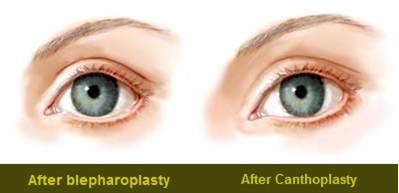Looks are largely genetic and whether we like to admit it or not, many of our defining features are directly inherited from our family members, especially with regard to our faces. Similarly to the way we inherit these features, the process by which these features change as we get older is also largely determined by our genes.
When my daughter was in grade school, I was lucky enough to be able to observe and confirm this theory, and also determine how best to incorporate these results into my practice. Using my daughter and her group of friends, as well as photographs of their mothers as examples, I studied how the shape and form of the eye changes with age. More specifically, I was able to use this as a case study to determine the exact features and attributes that cause an eye to look "youthful" rather than aged.
Using these photographs, I was able to identify the core principles of the youthful eye, and also how certain hereditary factors affect each patient differently, allowing me to develop the most effective procedures and obtain the best results on a case-by-case basis.
Through this process, I've found that the shape of the eye is determined by the relation of the upper and lower eyelids. In young adults with normal facial skeletons, the space between these upper and lower lids that frames the eye itself is long and narrow.
In addition to heredity, aging, paralysis, trauma and previous surgery can all impact this youthful shape. Aging eyes have a rounder shape, due to the "droop" of the lower lid, as well as the inward movement of the outer corner of the eye, where the eyelids meet.
Standard eyelid surgery (blepharoplasty) techniques, which remove lower eyelid skin, and often muscle, tend to drop the lower lid margin, further rounding the space between the upper and lower lids. As a result, newer techniques have been designed to avoid this rounding effect.
Two related procedures, canthopexy and canthoplasty, are used to elevate the lower lid when it has already fallen, or to prevent it from falling during a lower eyelid procedure. They work in different ways, and I generally only recommend one of them for my patients looking to restore a youthful look.
In my opinion, canthoplasty should be avoided in cosmetic eyelid procedures because it produces a rounder eye shape. By design, canthoplasty procedures make the lower lid frame of the eye more rounded, because they disassemble and reassemble the outside corner of the eye while shortening the lower lid.
Canthoplasty may be appropriate for certain post traumatic situations, or when the lower lid has become lengthened with age, but I do not find that it will satisfy patients who simply want a more youthful look.

Lateral canthopexy, on the other hand, is the surgical repositioning of the outside corner of the eye where the eyelids meet. During this procedure, the corner is moved outward and pexed to the lateral orbital rim. By restoring a "normal" eye shape, lateral canthopexy makes the eye appear more youthful.
Lateral canthopexy is fundamental to altering or restoring a more youthful shape. Lateral canthopexy may be performed on its own, but many patients combine it with eyelid surgery and/or midface elevation for the most comprehensive anti-aging results.
